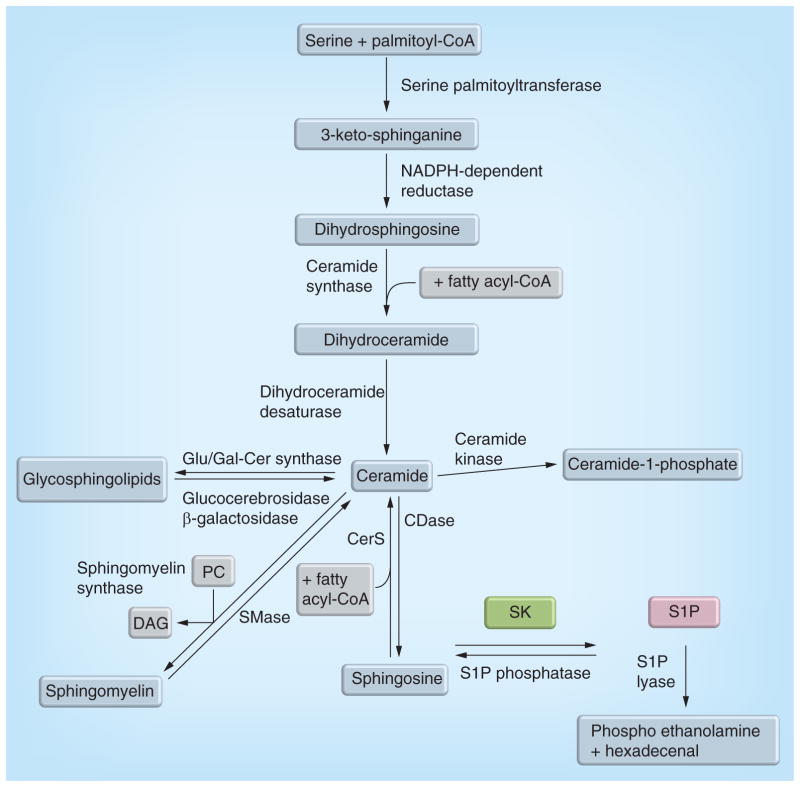Figure 1. Sphingolipid metabolism.
De novo sphingolipid production occurs via the condensation of serine and palmitoyl-CoA by serine palmitoyltransferase. Ceramide can be formed from the degradation of complex sphingolipids, such as sphingomyelin or glycosphingolipids. Phosphorlyation of ceramide by ceramide kinase can form ceramide-1-phosphate or deaclyation of ceramide can occur via one of five CDases. De-acylation results in the formation of sphingosine, which can be recycled back to ceramide by CerS or rapidly phosphorylated to form S1P by SKs. S1P can be dephosphorylated by S1P phosphatases or terminally degraded by S1P lyase to form hexadecanal and phosphoethanolamine. CDase: Ceramidase; CerS: Ceramide snythase; CoA: Coenzyme A; DAG: Diacylglycerol; Glu/Gal-Cer synthase: glucosylceramide/glalactosylceramide synthase; PC: Phosphatidylcholine; S1P: Sphingosine-1-phosphate; SK: Sphingosine kinase; SMase: Sphingomyelinase.

